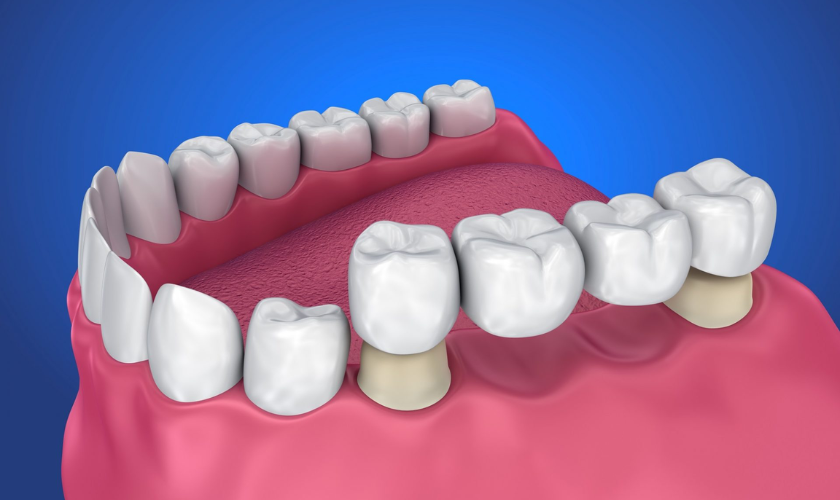$99 New Patient Special - Includes Exam, X-Ray and Basic Cleaning
Missing Teeth? Here’s Why Dental Bridges Are a Great Solution

A missing tooth can impact how you speak, how you chew foods, and even your facial structure. Over time, gaps between teeth can cause surrounding teeth to shift and result in severe bite problems. One of the best solutions to fix the situation is getting dental bridges. They restore your regular oral function like no other alternatives. You can also reinstate your appearance through bridges. Sounds promising? Let’s take a deep dive into dental bridges to make an informed decision:
Types of Dental Bridges
You may come across 10+ types of dental bridges. So you need to choose one based on your oral care needs. The most popular ones are:
- Traditional Bridges – The most common in the list, these use crowns on surrounding teeth to hold the artificial tooth in place. If you have natural teeth on both sides of the gap, these work well.
- Cantilever Bridges – If you have only one adjacent tooth to support the artificial tooth, these might work. They support your tooth structure but may put a bit of extra pressure on the supporting tooth.
- Implant-Supported Bridges – Similar to traditional bridges, these bridges help you replace your missing teeth. The unique feature of this bridge is it rests on dental implants. The implants fuse with the jawbone and stop your teeth from shifting their place. These implants hold the bridge securely.
Benefits of Dental Bridges
Living life with missing teeth is indeed challenging. It impacts both physical and emotional aspects of your life. Dental bridges enhance oral function and aesthetics alike. But that’s not it! The benefits of bridges include:
- Missing teeth make eating or chewing difficult. People have to rely on soft foods. It might stop them from enjoying the full benefit of a healthy diet. Bridges restore the ability to chew food properly, and aid in digestion. Now people can enjoy all sorts of foods without worrying about missing teeth.
- Teeth gaps alter how you pronounce words. It can make you self-doubt and cause low confidence. Bridges help you speak like your previous self. You can speak clearly without slurring with bridges.
- When a tooth is missing, its surrounding teeth handle extra bite pressure while chewing. Bridges balance the bite force and reduce the risk of tooth fractures or uneven wear.
- Teeth gaps cause surrounding teeth to move. Bridges keep them in place, maintain teeth alignment, and prevent bite problems.
Longevity and Care for Dental Bridges
Dental bridges can last 10 years or longer with the right oral care. You should:
- Daily brushing and flossing help you prevent plaque buildup
- Regular dental visits help you detect early signs of bridge damage
- Use fluoride toothpaste to lower the risk of decay around the bridge
Missing teeth impact daily life, but dental bridges provide an effective solution. They restore function, prevent shifting, and improve aesthetics. Choosing the right type ensures long-term benefits. Regular care keeps them in excellent condition. Consulting a local dentist helps you get the right help on time.





